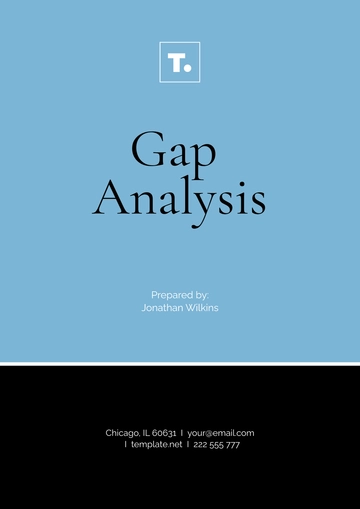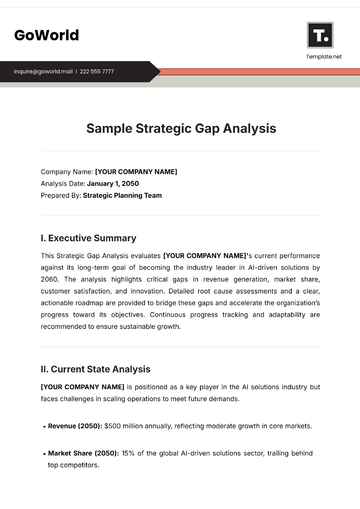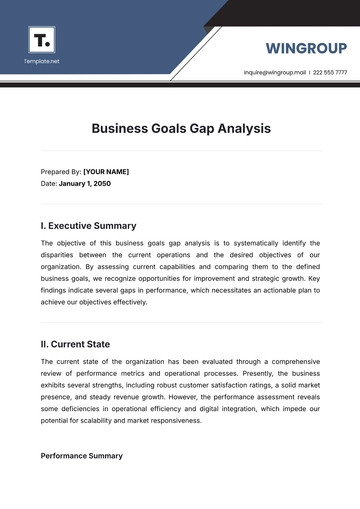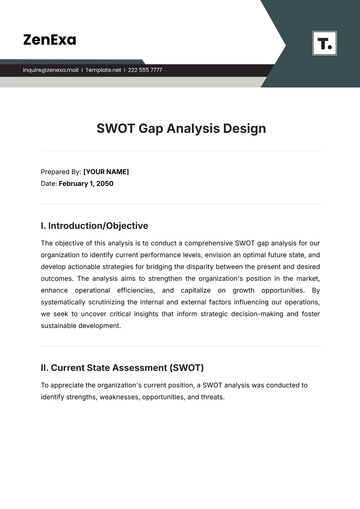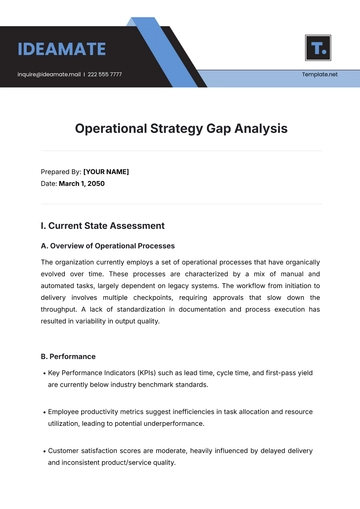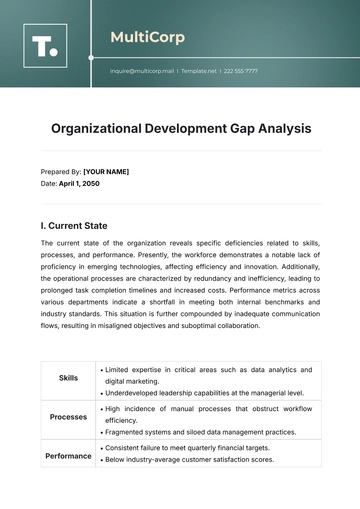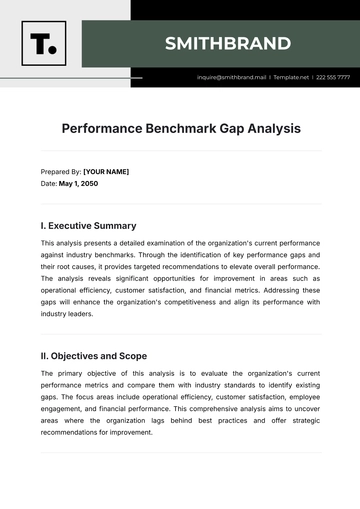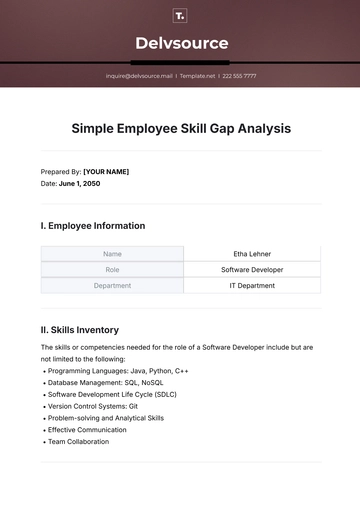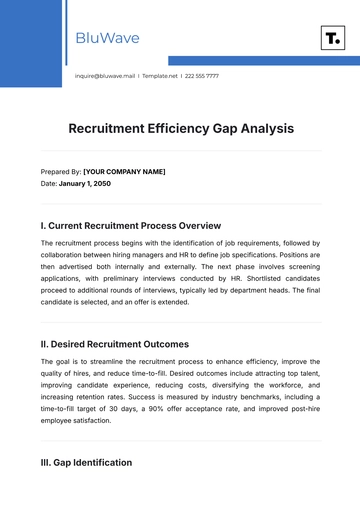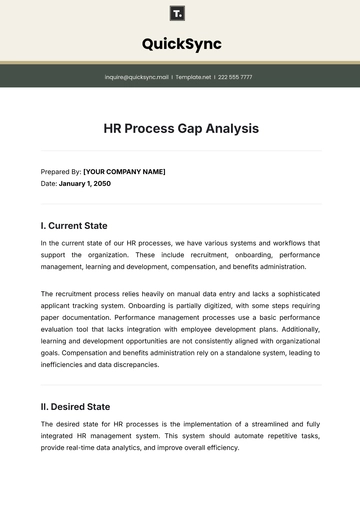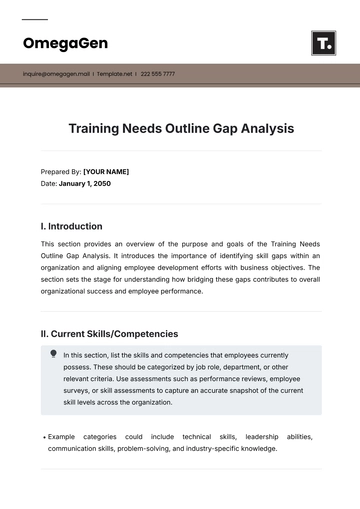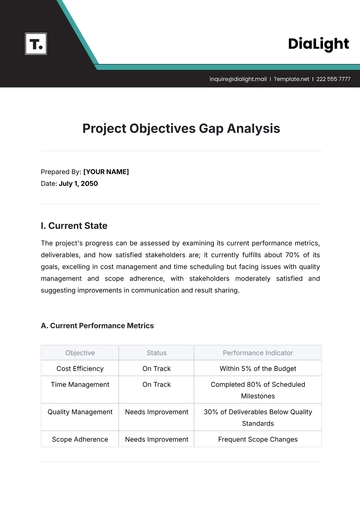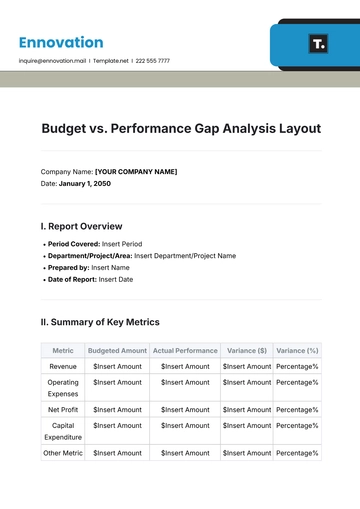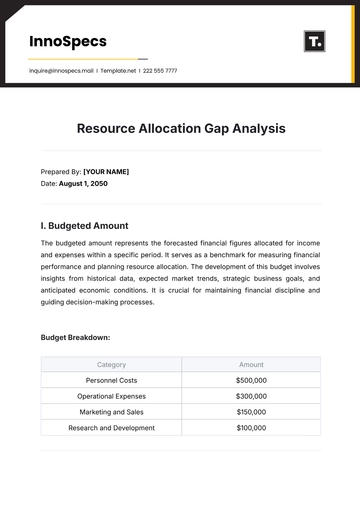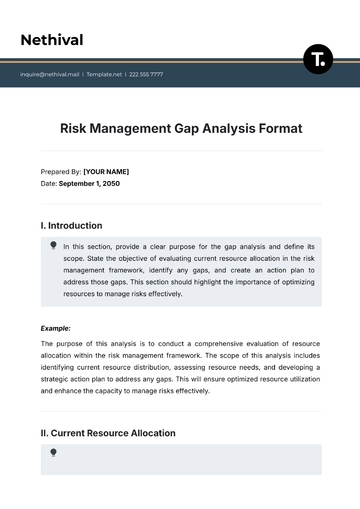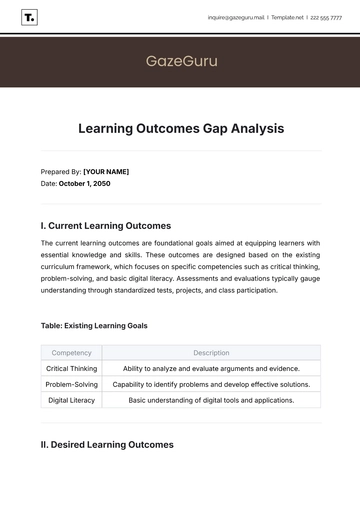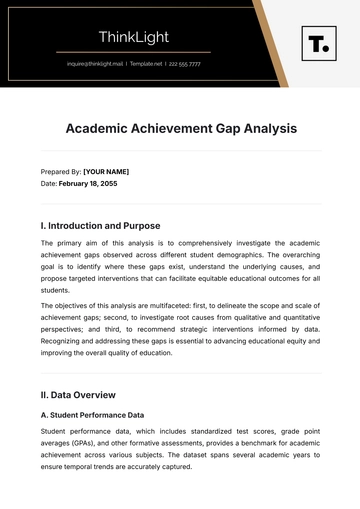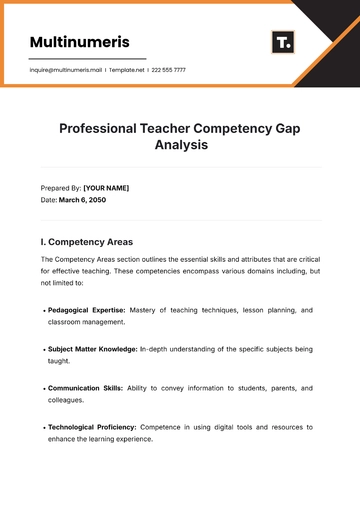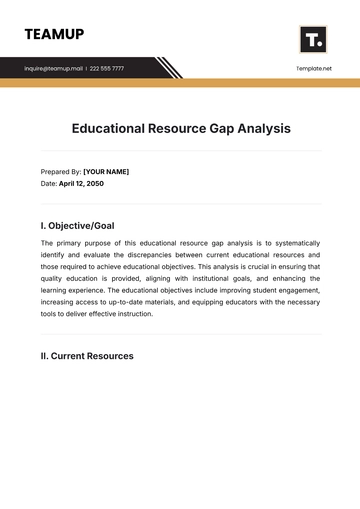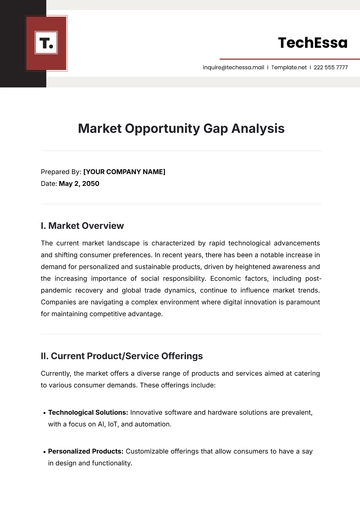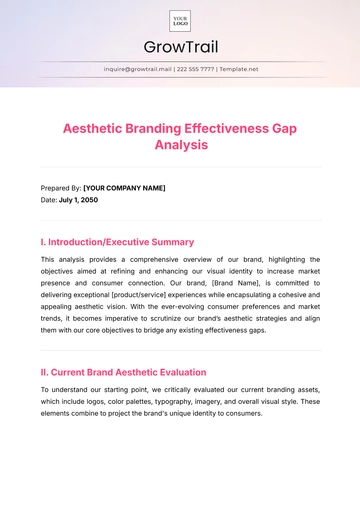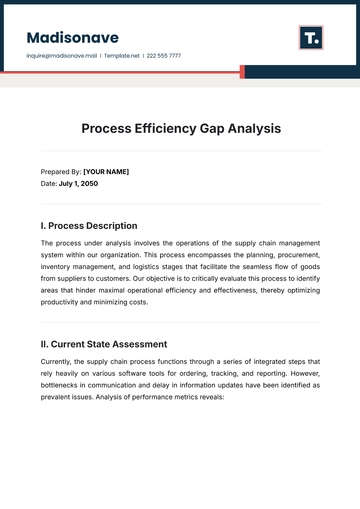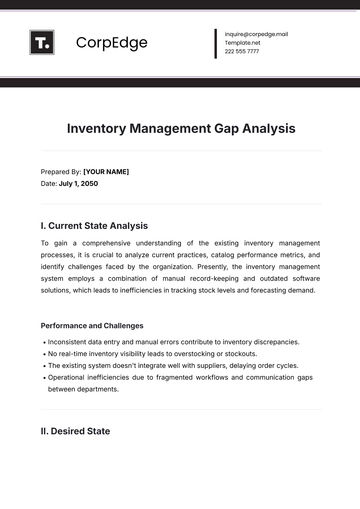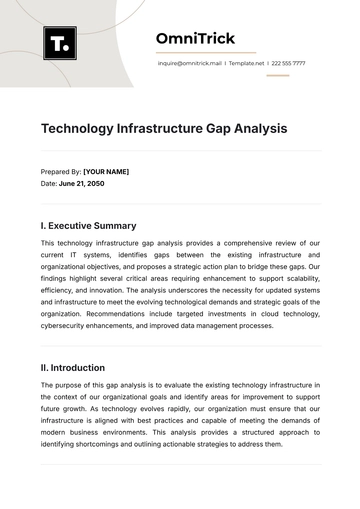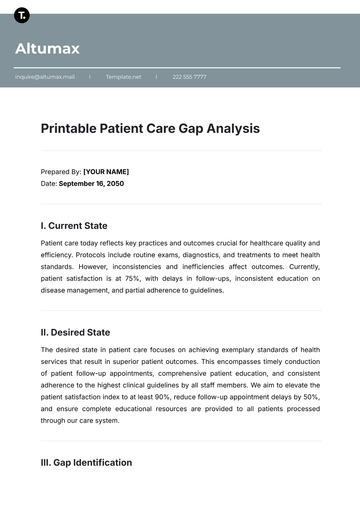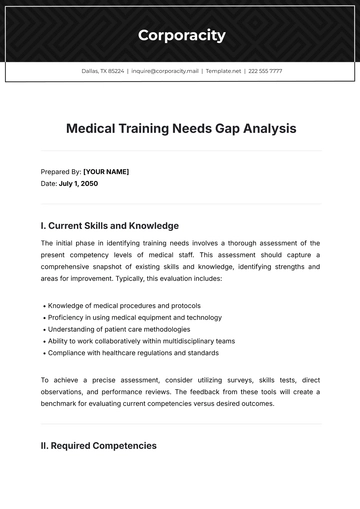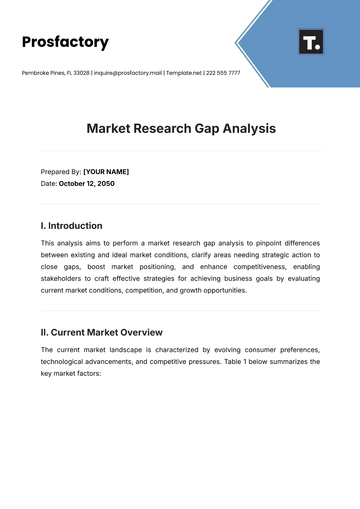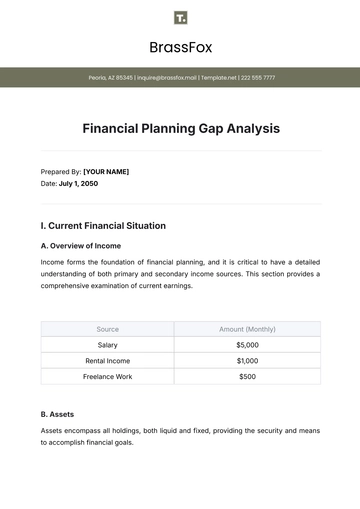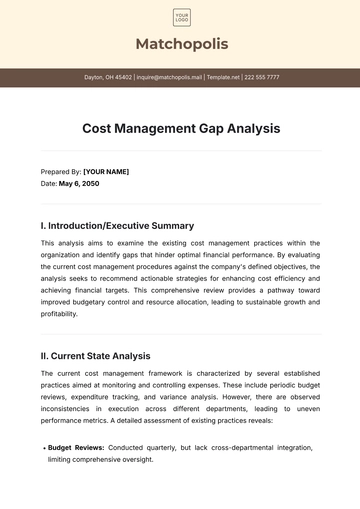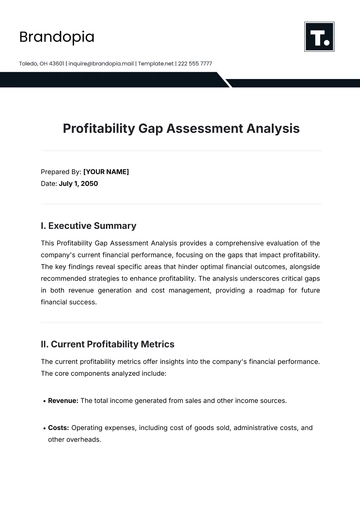Free Market Opportunity Gap Analysis
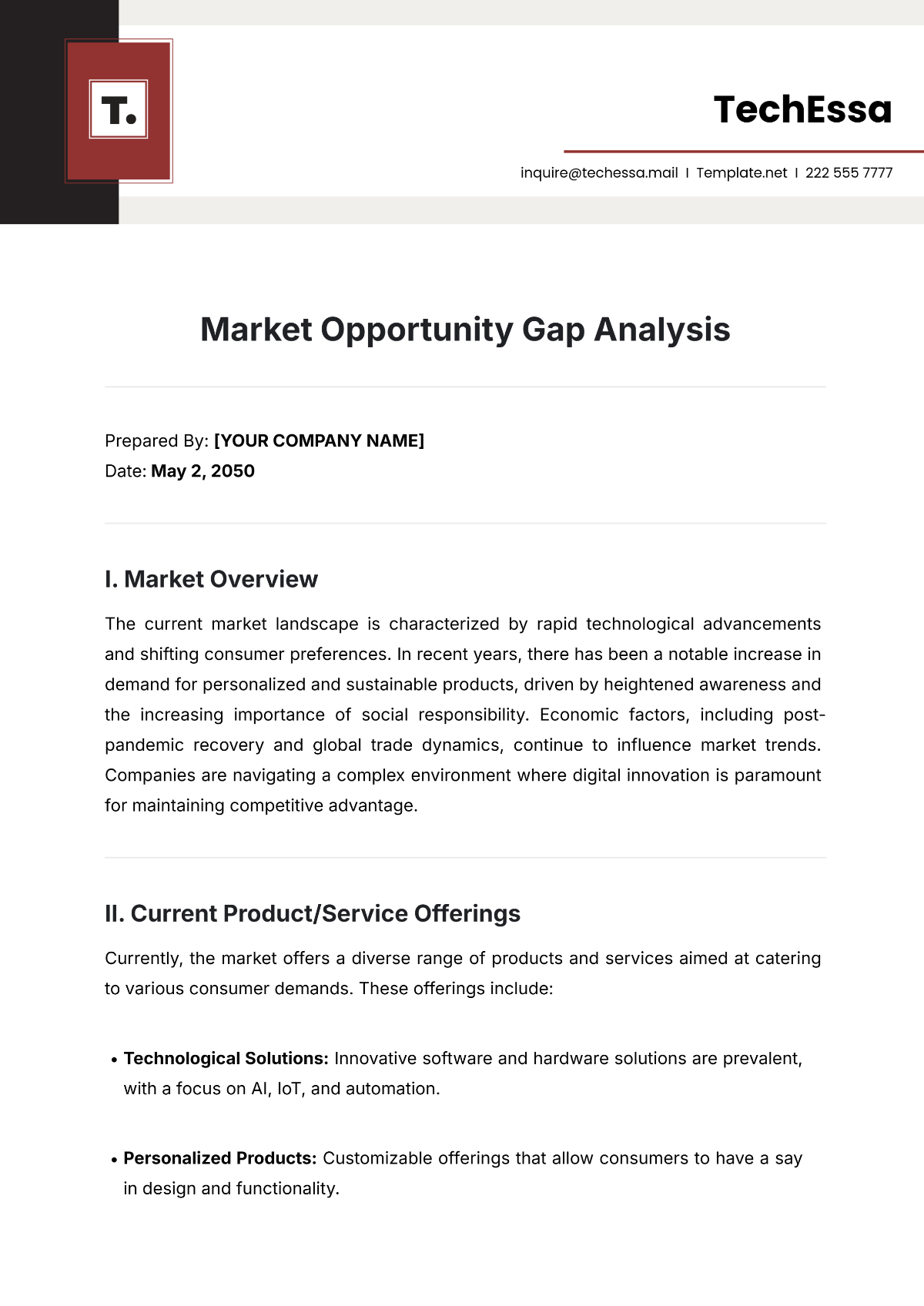
Prepared By: [YOUR COMPANY NAME]
Date: May 2, 2050
I. Market Overview
The current market landscape is characterized by rapid technological advancements and shifting consumer preferences. In recent years, there has been a notable increase in demand for personalized and sustainable products, driven by heightened awareness and the increasing importance of social responsibility. Economic factors, including post-pandemic recovery and global trade dynamics, continue to influence market trends. Companies are navigating a complex environment where digital innovation is paramount for maintaining competitive advantage.
II. Current Product/Service Offerings
Currently, the market offers a diverse range of products and services aimed at catering to various consumer demands. These offerings include:
Technological Solutions: Innovative software and hardware solutions are prevalent, with a focus on AI, IoT, and automation.
Personalized Products: Customizable offerings that allow consumers to have a say in design and functionality.
Sustainable Options: Eco-friendly products and services are becoming mainstream, reflecting the growing consumer focus on sustainability.
Health and Wellness: A heightened awareness of health has led to an expansion of products in this category.
III. Target Market Analysis
The target market includes diverse customer segments, each with unique needs and preferences:
Segment | Characteristics | Needs |
|---|---|---|
Tech-savvy Consumers | Early adopters of technology, primarily millennials and Gen Z. | Innovative and cutting-edge technological products and seamless user experiences. |
Eco-conscious Individuals | Consumers prioritizing environmental sustainability. | Products that are eco-friendly and ethically produced. |
Health Enthusiasts | Individuals focused on health and wellness. | Safe, organic products that support well-being. |
Affluent Customers | High-income individuals seeking premium experiences. | Luxury products and personalized services targeting exclusivity. |
IV. Competitor Analysis
The market is intensely competitive, with several key players holding substantial market shares. They include:
Company A: As a trailblazer in the field of innovation, this entity places a significant emphasis on developing and implementing technology solutions that are driven by artificial intelligence.
Company B: The company is renowned for its comprehensive and robust sustainability initiatives, as well as for offering a diverse range of eco-friendly product lines.
Company C: The company provides a diverse selection of high-end products specifically designed to appeal to and attract affluent customer bases.
Company D: Specializes in health and wellness products with a strong emphasis on organic offerings.
V. Gap Identification
Several gaps exist between customer needs and the current market offerings:
Personalization: Despite numerous offerings, there is a lack of highly customized options tailored to specific consumer preferences.
Affordability vs. Sustainability: Sustainable products are often priced at a premium, limiting access for cost-conscious consumers.
Integrated Wellness Solutions: A gap exists in providing comprehensive solutions that integrate technology with wellness benefits.
Luxury Innovation: The luxury sector lacks innovative solutions that combine exclusivity with cutting-edge technology.
VI. Opportunity Evaluation
The potential impact and feasibility of addressing these gaps present significant opportunities:
Market Differentiation: Companies can distinguish themselves by offering more personalized and customizable solutions, enhancing customer satisfaction.
Broader Market Reach: Affordable sustainable product lines can attract a wider audience, increasing market penetration.
Holistic Offerings: Developing integrated wellness solutions can tap into the growing health-focused market segment, fostering brand loyalty.
Innovation in Luxury: Leveraging technology to innovate within the luxury market can create unique offerings that appeal to high-end customers.
VII. Strategic Recommendations
To seize these opportunities, the following strategic actions are recommended:
Invest in R&D: Prioritize research and development to innovate personalized and sustainable product lines.
Enhance Affordability of Sustainable Options: Streamline production to reduce costs, making eco-friendly products accessible to a broader audience.
Develop Integrated Solutions: Collaborate with technology firms to create differentiated wellness and tech-integrated offerings.
Luxury Tech Partnerships: Forge alliances with tech leaders to incorporate cutting-edge innovations into luxury offerings, enhancing exclusivity.
By implementing these strategies, companies can effectively bridge the gaps in the market, achieving growth and ensuring long-term competitive advantage.
- 100% Customizable, free editor
- Access 1 Million+ Templates, photo’s & graphics
- Download or share as a template
- Click and replace photos, graphics, text, backgrounds
- Resize, crop, AI write & more
- Access advanced editor
Identify growth opportunities with the Market Opportunity Gap Analysis Template from Template.net. This editable and customizable tool enables businesses to analyze gaps in market presence and capitalize on new opportunities. Adjust the template to your specific industry using our AI Editor Tool. Make data-driven decisions and unlock your market potential today.
